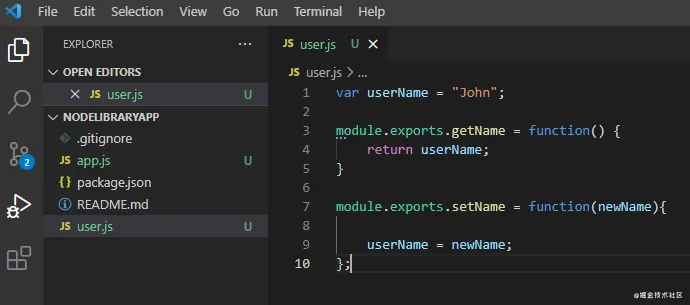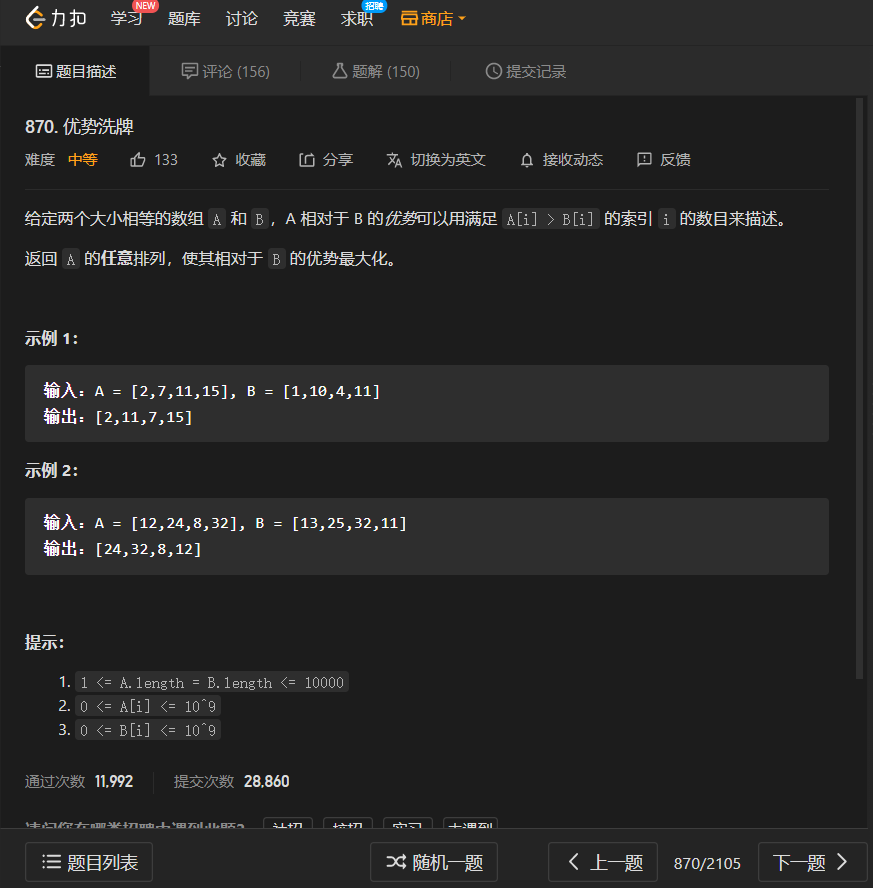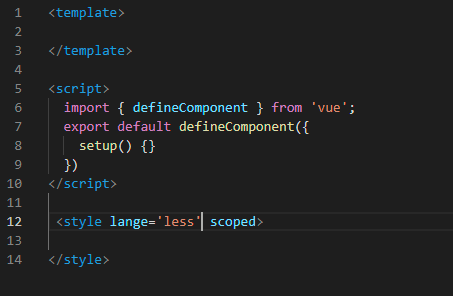快速排序 递归 与 非递归
递归法
#
快排的思想
设当前需要排序的数组为int A[bt…ed]
分解:
在A[]中任选一个记录作为基准(pivot),以pivot为基准将数组A划分为两个小的数组A[bt…pivot-1]和A[pivot+1…ed],并使左边的数组元素均小于等于pivot,右边数组元素均大于等于piovt。此时,pivot处于正确的位置上,它不需要再参加后续的排序
求解:
递归的调用快速排序,对A[bt…pivot-1]和A[pivot+1…ed]进行快速排序
组合:
跟归并排序不同,因为每次调用快速排序,左右两个数组均已有序,因此对于快速排序来说,组合是一个空操作
实现代码(C语言)
快排用c实现其实可以直接调用系统的qsort函数,自己写compare比较函数即可,在php里是调用usort函数,但是面试考察大部分都是不能调用系统函数的,所以这里提供一下代码,供参考:
[cpp] view plain copy
- /**
- * 基准点排序
- *
- * T = O(n)
- *
- */
- int pivotLoc(int *arr, int bt, int ed)
- {
- int stand;
- stand = arr[bt];
- while (bt < ed) {
- while (bt < ed && arr[ed] >= stand) ed —;
- if (bt < ed) arr[bt ++] = arr[ed];
- while (bt < ed && arr[bt] <= stand) bt ++;
- if (bt < ed) arr[ed —] = arr[bt];
- }
- arr[bt] = stand;
- return bt;
- }
- /**
- * 快排入口代码,递归策略
- *
- * T = O(nlogn)
- *
- */
- void quickSort(int *arr, int bt, int ed)
- {
- int pivot;
- if (bt < ed) {
- pivot = pivotLoc(arr, bt, ed);
- quickSort(arr, bt, pivot - 1);
- quickSort(arr, pivot + 1, ed);
- }
- }
优化
快排的平均时间复杂度是O(nlogn),但是考虑一下最坏的情况:
假设给定的排序序列是逆序,例如5、4、3、2、1,然后用上述快排代码进行从小到大排序,很明显,快排从O(nlogn)降到了O(n^2),如何避免这种情况呢?
解答:基准点的随机选取,我这里每次采用mid作为基准点
[cpp] view plain copy
- /**
- * 快排优化,随机选取基准点
- *
- */
- void optimizeSort(int *arr, int bt, int ed)
- {
- int mid = bt + ((ed - bt) >> 1);
- // 不使用额外空间,进行两数互换
- if (arr[bt] != arr[mid]) {
- arr[bt] = arr[bt] ^ arr[mid];
- arr[mid] = arr[bt] ^ arr[mid];
- arr[bt] = arr[bt] ^ arr[mid];
- }
- }
- /**
- * 基准点排序
- *
- * T = O(n)
- *
- */
- int pivotLoc(int *arr, int bt, int ed)
- {
- int stand;
- // 快排优化
- if (bt < ed) {
- optimizeSort(arr, bt, ed);
- }
- stand = arr[bt];
- while (bt < ed) {
- while (bt < ed && arr[ed] >= stand) ed —;
- if (bt < ed) arr[bt ++] = arr[ed];
- while (bt < ed && arr[bt] <= stand) bt ++;
- if (bt < ed) arr[ed —] = arr[bt];
- }
- arr[bt] = stand;
- return bt;
- }
- /**
- * 快排入口代码,递归策略
- *
- * T = O(nlogn)
- *
- */
- void quickSort(int *arr, int bt, int ed)
- {
- int pivot;
- if (bt < ed) {
- pivot = pivotLoc(arr, bt, ed);
- quickSort(arr, bt, pivot - 1);
- quickSort(arr, pivot + 1, ed);
- }
- }
非递归法
/**BLOG:http://blog.csdn.net/wdzxl198*AUTHOR:Atlas*EMAIL:wdzxl198@163.com*/#include<iostream>#include<stack>using namespace std;int Partition(int array[],int lhs,int rhs){int x = array[rhs];int i = lhs - 1;for(int j=lhs;j<=rhs-1;j++){if(array[j] <= x){++i;std::swap(array[i],array[j]);}}std::swap(array[i+1],array[rhs]);return i+1;}void QuickSort(int *arr,int left,int right){stack<int> st;if(left < right){int mid = Partition(arr,left,right);if(left < mid-1){st.push(left);st.push(mid-1);}if(mid+1 < right){st.push(mid+1);st.push(right);}while(!st.empty()){int q = st.top();st.pop();int p = st.top();st.pop();mid = Partition(arr,p,q);if(p < mid-1){st.push(p);st.push(mid-1);}if(mid+1 < q){st.push(mid+1);st.push(q);}}}elsereturn;}int main(){int a[10] ={3,7,6,4,0,2,9,8,1,5};for(int i=0;i<10;i++)cout<<a[i]<<" ";cout<<endl;cout<<"快速排序:";QuickSort(a,0,9);for(int i=0;i<10;i++)cout<<a[i]<<" ";cout<<endl;system("PAUSE");return 0;}



































还没有评论,来说两句吧...